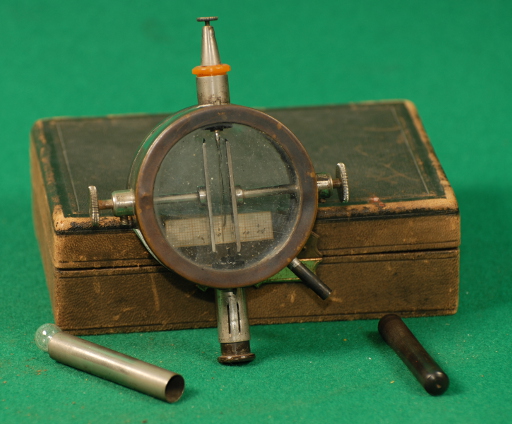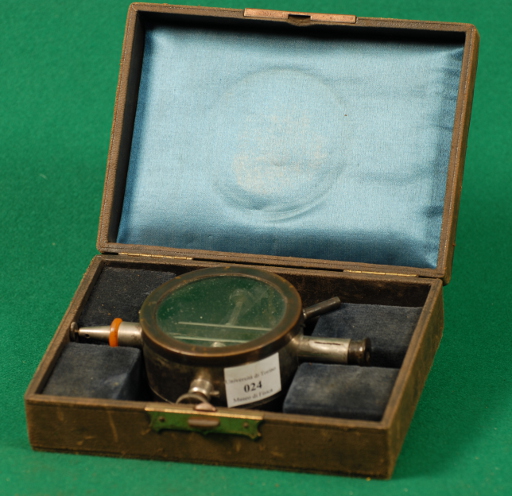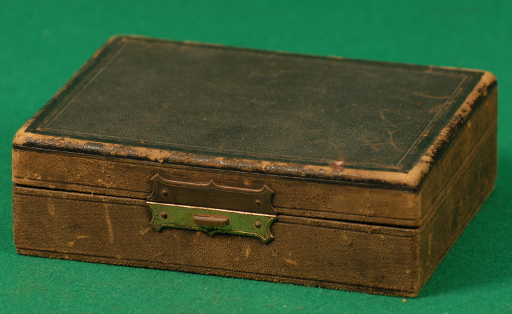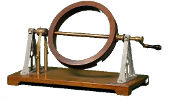» Exner Leaf Electrometer (0024)
Immagini



DESCRIPTION
The Exner electro-meter was invented by the Austrian physicist Franz Exner (1849-1931) who developed it for his studies on atmospheric electricity. The Elster and Geitel electro-meters were similar, having been derived from that of Exner.The initiator of this series is the foil electro-meter invented by Volta, based on the fact that like charges repel.
The Exner model is composed of a cylindrical metal box with a horizontal axis and two glass windows, in which is inserted through an amber collar a thin fixed vertical plate. This plate has a truncated cone topped by a small aluminum ball on the outside. On the inside, an aluminum foil is attached to the plate. On the sides of the foil, are two metal plates whose distances from the foil can be adjusted for two reasons: to protect the foil for transport and to discharge the foil while in use. ?
The electro-meter is furnished with a hard rubber rod and a glass rod to be electrified by rubbing. The apparatus seems robust but is delicate for some aspects. In particular: -The amber collar must always be clean and not touched by hands. -On days of low humidity the glass windows must not be rubbed to avoid electrifying them, deviating the foil and thus tearing it.
The electro-meter is calibrated by applying known voltages and measuring the divergence angles of the foil. Observable deviations start at about 50 V and arrive at 90 degrees for 300V.
Dati Catalografici
| Data di costruzione: | --- |
|---|---|
| Data di carico: | sconociuta |
| Nr. Inventario: | Ignoto (Ignoto) |
| Costruttore: | Costruttore sconosciuto |
| Materiale: | legno, metallo, rame |
| Dimensioni: | Diametro: 7 cm; altezza 3,3 cm; Custodia: 50 cm x 15,5 cm x 11,5 cm |
| Conservazione: | buono |
